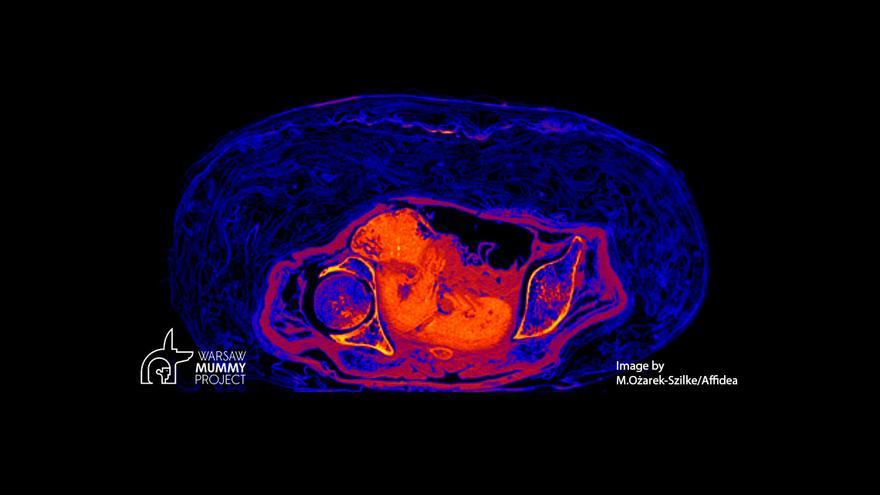The fetus of an Ancient Egyptian mummy that was pregnant has been preserved to this day by a process similar to pickling food that happened naturally. It has stood the test of time for 2,000 years.
Scientists working on the world’s first known pregnant mummy have discovered that the embalmed fetus was preserved for 2,000 years to the present day by a process similar to pickling.
Pickling is a technique that allows food to be preserved for months: it is immersed in a saline solution that allows it to prolong its life. Something similar happened with the pregnant Ancient Egyptian mummy, which was released in April 2021.
At first it was thought that the mummy corresponded to the remains of the priest Hor-Jehuti, until in 2016 it was discovered that it was an embalmed woman.
Further examination using tomographic images then revealed that the woman was between 20 and 30 years old when she died and that she was in the 26th to 30th week of her pregnancy.
how was it preserved
New research took a close look at the fetus and found out how it has been preserved to this day. The researchers explain that the fetus was “pickled” in an acidic environment in a process similar to how ancient bodies are preserved in swamps.
When the woman died, the fetus was still in the uterus and began to pickle in an acidic environment, produced by the change in pH inside the corpse. The decomposition process did not affect the fetus because the mother had been mummified with natron and the resulting dryness also preserved the fetus.
The end result was an almost hermetically sealed uterus that contained the fetus. The change from an alkaline to an acidic environment also led to partial decomposition of fetal bones, which became dry and mineralized.
This process explains why it took time to locate the fetus, since it lacked visible bones, according to Explain in the blog of the project The Mummy of Warsaw.
Two mummies in one
In the case of the Warsaw mummy, there were actually two mummification processes. The fetus was in an acidic, swamp-like environment, which later dried up during the embalming of the mother. Then, another mummification process happened, the mineralization of the fetus.
During drying, the bone minerals, which were dissolved in the fetal waters, were deposited in the soft tissues of the fetus and uterus. As an effect, the fetus and uterus were highly mineralized.
The researchers note that when radiologists examine mummies for possible fetuses, they are usually looking for bones. This research shows that it is more important to study the shape of the soft tissues in the pelvic area.
They add that there is a very high probability that there may be more mummies of pregnant women in other mummified collections.
Considering these findings, it is only a matter of time before the next mummified pregnant woman is discovered, the researchers say.
human tragedy
They also point out that the Warsaw mummy still holds many secrets: they still do not know why the fetus was left in the womb while other internal organs were removed.
They add that, although the pregnant mummy has become famous, and that from a scientific point of view all its research is fascinating, it should not be forgotten that we are facing a human tragedy that we must respect.
“The Mysterious Lady died along with the unborn child, and by examining her, we restore their memory. We remember that she was a long-lived person who had her dreams, probably loved and was loved. Now she reveals to us the secrets she took to her grave” , say the researchers.
References
Further evidence to confirm the ‘pregnant mummy’: A reply to Saleem (2021). Wojciech Ejsmond et al. Journal of Archaeological Science, Volume 137, January 2022, 105504. DOI:https://doi.org/10.1016/j.jas.2021.105504
A pregnant ancient egyptian mummy from the 1st century BC. Wojciech Ejsmond et al. Journal of Archaeological Science, Volume 132, August 2021, 105371. DOI:https://doi.org/10.1016/j.jas.2021.105371
www.informacion.es
Eddie is an Australian news reporter with over 9 years in the industry and has published on Forbes and tech crunch.
